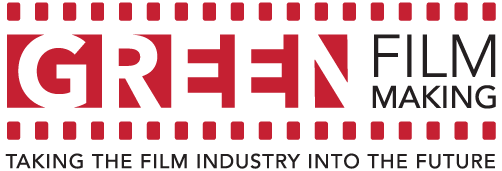
Location
A film production sometimes looks like a traveling circus. Everything comes together on set: People, technology, equipment. Everyone has to eat and get rid of waste somewhere, lamps must be powered and water needs to be available for sanitation.
So it’s specifically on location that there are many factors that you can make more sustainable. Just as you can live a lot more efficient and sustainable at home too with a few simple changes.
Are you location manager or executive producer and want to know which easy steps to make? Read the tips below that were compiled in collaboration with Tijn Heerkens, location manager of Locatiewerk.
Tips & Tricks
- Check the possibilities for connecting to the electrical grid, for example through public power outlets. You can check available outlets on our special Harvest Map: www.filmoogstkaart.nl
- Use hybrid or electric generators on set, such as the True Hybrid by Het Licht, or use mobile batteries on green energy or solar power, like the Green Battery, Greener, the Groene Aggregaat, Ecarpower or the Volta Energy. They are silent in use and much more efficient in terms of transport. It’s also worth checking out the foldable solar panel units, Fast Fold. For smaller power needs, there is also the super mobile and stackable Wattsun. Read about the experience of gaffers with the True Hybrid on set in this report. Read in this article about the Green Battery. Besides the public power outlets, you can also find other sustainable energy options on our Harvest Map!
- If you still need to use a normal generator, see if you can fuel it with HVO biodiesel. HVO biodiesel, by for example Goodfuels, is produced from 100% certified waste streams and is 90% carbon neutral. It also reduces exhaust by 30% and thus improves air quality. Alternatively, refuel with GTL (gas to liquid) instead of diesel. GTL diesel is made from natural gas. GTL gives much less pollutants when burned. Modern engines can usually take GTL without modification. Lighting company Lux & Co. use GTL for its cars and generators.
- Ask your location manager to check which departments need a generator and try to combine or really purchase custommade sustainable. Usually there are too many (older) generators. A combination with home electricity is also often an option.
- Use the Harvest Map to buy a generator close to the location.
- Carpool as much as possible. Consult with the production this can be stimulated with (financial) incentives.
- Encourage the crew to buy cars with fuel-efficient and environmentally friendly engines.
- Invoices via e-mail instead of regular mail.
- Don’t print any call sheets, scripts and script changes anymore, but e-mail them. Only provide print-outs of these things upon request.
- No need to have the location manager provide directions. Everyone has a navigation system nowadays. This saves a lot of milage to install the signage. And also time and paper.
- Introduce drinking tap water on set with reusable bottles and portable refill stations by Join the Pipe or the Setsink of Locatiewerk. For public and free water tap points in The Netherlands, check this excellent overview: Drinkwaterkaart. There are more than 1500 options! With these solutions it’s really a piece of cake. For public water points abroad, check the site of the Refill Ambassadors.
- Use the economical vacuumtoilet trailer or the WC Flex to use the bathroom. Neither has to be connected to a sewer or water line.
- Utilize Skyliner, the special multifunctional location trailer of Locatiewerk. By combining functions in one trailer, you save a lot on transport and lower emissions.
- Use electric gators on set where possible for tranportation. The original is a John Deere design, check here for the specs. There is also a Dutch model on the market. Frisian Motors have their own model FM50 for sale. In the Northern provinces (Friesland, Groningen, Drenthe) you can rent them here. They can also occasionally be found on second hand platforms where you can also resell them again after use.
- Keep an eye on your impact on your location and if there is any special rules that apply, for example in a nature reserve. Think about sound and exhaust levels. Collaborate with a specialist if possible.
- Save on waste by critically examining caterers. At the moment there are huge differences between caterers when it comes to the amount of waste they produce. This has to do particularly with product packaging.
- Municipalities often still give a printed sheet with Terms & conditions with each exemption. So if you have 20 exemptions you 20 times the same print-out. Perhaps you can agree whether this can be provided digitally.
- Also check out the options for choosing the location entirely digitally. Readysetstudio has the option of projecting a moving location on LED screens, so that the actors still feel that they are in a real environment. This can save a lot of transport costs and time.
Do you have any suggestions? Let us know via info@greenfilmmaking.com.
In May 2015 several sustainable entrepreneurs presented their energy saving alternatives for generators that are practical and effective for the film set. Watch the video report here below.
Recap workshop May 22nd: Sustainability on Location from greenfilmmaking on Vimeo.
